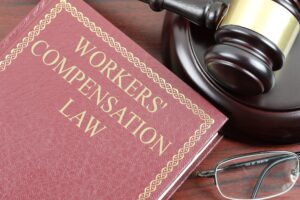The Regulatory Reform (Fire Safety) Order 2005 came into force on 1 October 2006 and applies across England and Wales. If you own, operate, or manage a business you need to comply with the regulations of the Fire Safety Order. It applies to almost all buildings, structures and places other than private individual homes such as family homes or individually owned flats in a block of flats. Other places that are covered by the Order include shared houses in HMOs, (Housing in Multiple Occupation), maisonettes, and flats.
What are the Requirements of the Order?
In order to comply with the Fire Safety Order, you need to ensure that:
- The premises comply with the required standards
- All employees are provided with adequate fire safety training
Adequate fire safety training may vary from business to business, but generally, it includes the following:
- Induction training that includes general fire awareness
- Training in appropriate fire safety skills such as fire risk assessment, use of fire extinguishers, and fire warden training.
- Training to meet fire safety duties for example keeping ‘responsible individuals’ up-to-date on fire safety practices.
- Periodic refresher training.
- Extra training when the level of fire risk increases due to changes in operations.
Where to Find Guidance
Required standards are dependent on the type of building in question and guidance can be obtained from the gov.uk website. For example, for specialized housing such as extra-care housing, sheltered housing, or housing for people with learning disabilities or mental health problems you will find information in the NFCC Specialised Housing Guidance. Information about purpose-built dwellings like blocks of flats can be found in the LGA (Local Government Association) downloadable guide on ‘Fire Safety in Purpose-Built Flats’.
For HMOs, bedsits, and shared houses you will find the information in the LACoRS guide.
Conducting a Fire Risk Assessment
A Risk Assessment takes a careful look at the premises as well as the people occupying or working in them from a fire-prevention perspective and then implementing or improving fire safety precautions to reduce the risks.
By law, it is mandatory to conduct a detailed fire risk assessment to identify the hazards and risks of commercial premises and if there are more than five employees it must be recorded in writing. The person responsible for the premises must ensure that:
- A Fire Risk Assessment is completed by a competent person.
- Identify who may be especially at risk
- Provide general fire precautions to deal with risks
- Reduce or eliminate fire risks as far as is reasonably practicable
- Create an emergency plan to deal with emergencies and record findings where necessary
- Implement additional fire safety measures where dangerous substances such as flammable or explosive materials are used or stored.
- Maintain general fire precautions.
- Provide facilities for use by firefighters.
Part of the responsibilities of a fire department is to keep people safe and an important part of their duties is to ensure that fire safety rules are followed by those responsible for commercial premises. The Fire Brigade can enforce legislation, particularly laws around fire safety as set out in the Regulatory Reform Order 2006. They are responsible for ensuring that an appropriate assessment has been done and that businesses are compliant. If the premises are found to be unsafe or an assessment has not been done the responsible person may be fined or even imprisoned if someone is hurt in a fire. If the Fire Brigade decides that people’s safety is at risk they may close down the business until the premises are made safe for employees and members of the public.
Who Does the Fire Risk Assessment?
Large and complex organizations need to use a suitably qualified fire risk assessment specialist to do the assessment, but smaller businesses or SMEs can use the guides on the gov.uk website with information on what is required and how to complete the assessment themselves.
Creating an Emergency Plan
The employer, occupier, or owner of any premises that is not a private home is responsible for keeping people safe in the event of a fire. Although prevention comes first, it is also required by law that an emergency fire plan is created to keep people out of danger when a fire breaks out. There is a simple template on how to set out an emergency fire plan on the gov.uk website under ‘Fire Safety Risk Assessment’.





Be First to Comment